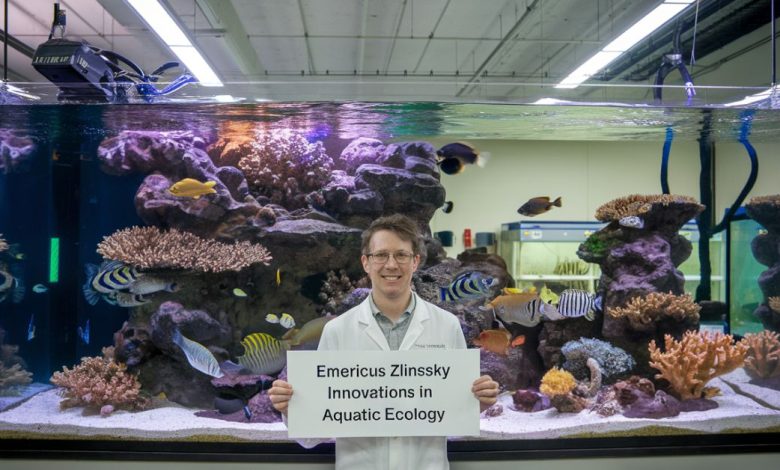Unveiling Emericus Zlinszky Innovations in Aquatic Ecology

Introduction
Their paper opens with an introduction to Emericus Zlinszky, who is one of the founding fathers of aquatic ecology, as well introducing the intriguing question of how water ecosystems interface with the environment. He has transformed the application of remote sensing and laser scanning that provides a fresh perspective to research and conservation of water habitats. His work has become vital for the monitoring of biodiversity and for the study the effects of climate change on worlds water resources. Zlinszky’s ideas of interactions of water levels of swamps, lakes, and rivers have transformed conservation approaches. The next video is a suitable reflection on the work Emericus Zlinszky for the study of the mechanisms of aquatic ecology.
Emericus Zlinszky: A Pioneer in Environmental Remote Sensing
Emericus Zlinszky expertise lies in applying remote sensing techniques to monitor and protect aquatic environments. His groundbreaking use of airborne laser scanning, or LiDAR, has allowed researchers to capture high-resolution data on wetlands, rivers, and lakes. This innovative approach enables scientists to map water surfaces, measure water depth, and observe vegetation patterns in unparalleled detail. Zlinszky’s work has set new standards in ecological monitoring, providing critical data for climate change research and environmental management efforts worldwide. His pioneering spirit continues to inspire environmental scientists globally.
Revolutionizing Wetland Research with LiDAR Technology
Wetlands therefore play an important role of providing conservation of biologic diversity and water purification. Consequently, Emericus Zlinszky has immensely contributed to wetland research after developing 3D models of such valuable ground structures through the LiDAR technique. This I-M said to enable the researcher to monitor the fluctuations of water depth, vegetation coverage and structuring as well. Thanks to more efficient observations of wetlands, Zlinszky explained that conservationists are now able to come up with better approaches in protecting these important ecosystems from effects of climate change as well as human interferences.
Aquatic Ecology and Climate Change: Zlinszky’s Contributions
According to his findings, Zlinszky has provided important information on how climatic change influences water bodies. His laser-based remote sensing tools offer accurate information of how temperature and other climatic changes affects lakes, rivers, coastal areas and the like. Because his research entails tracking changes in water levels, species occurrence, and vegetation vigor, Zlinszky’s work makes it possible to estimate how water bodies might transform over time along a climatic gradient. These findings have immediate applicability to designing contingency conservation management plans. These plans might help minimize the impacts of climate change on freshwater and marine habitats.
Enhancing Biodiversity Monitoring with Advanced Technology
Ecological survey has been widely recognized as the essential component of the conservation and using the result of his hard-working, Emericus Zlinszky has been putting frontiers in the BV field. Zlinszky has access to high-speed imaging and LiDAR sensors, he or she can monitor the state and species richness of aquatic plants and animals across big territories. This advanced state of the art helps in establishing which species and ecosystems are at risk within changing environments. Zlinszky’s experience has a positive effect in this domain. We have all gained sufficient knowledge to minimize threats to the simplest forms of life in aquatic environments. This knowledge helps us preserve vulnerable systems.
Zlinszky’s Impact on Global Conservation Efforts
Emericus Zlinszky is not only an academic writer, as his findings contribute to shaping and implementing worldwide conservation policies and strategies. In this way, Zlinszky has supplied policymaker and environmentalists with right and most current information about the aquatic ecosystems. His work has helped save critical ecosystems, both plant and animal species, as well as improve the earth’s environmental policies. Zlinszky’s key milestones can be described by his action and creativity in addressing future world challenges. He focuses on the future of our planet.
FAQ’s
Who is Emericus Zlinszky?
Emericus Zlinszky is a leading researcher in aquatic ecology and environmental conservation.
What is LiDAR technology?
LiDAR is a remote sensing technology that uses laser light to create high-resolution 3D maps of natural environments.
How has Zlinszky contributed to wetland conservation?
Zlinszky’s use of LiDAR technology has revolutionized the monitoring and preservation of wetlands.
What is the focus of Zlinszky’s climate change research?
Zlinszky studies how climate change affects aquatic ecosystems, particularly lakes, rivers, and wetlands.
Why is Zlinszky’s work important for biodiversity?
His research helps monitor species health and diversity, aiding in the protection of vulnerable ecosystems.
Conclusion
Emericus Zlinszky is rightfully considered an antecedent of aquatic ecology and environmental conservation movement. He has used LiDAR and other advanced remote sensing technologies as tools. These tools have revolutionized the understanding and preservation of aquatic habitats. His work provides greater insight into these significant ecosystems. It also gives the international conservation community a weapon to resist climate change. Zlinszky’s art introduces the importance of science in protecting the environment for future generations.




